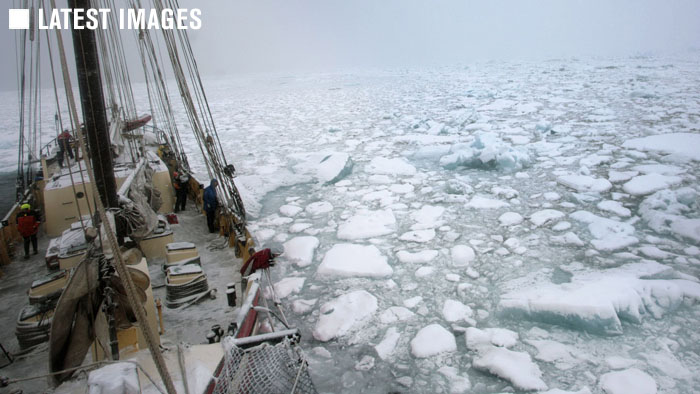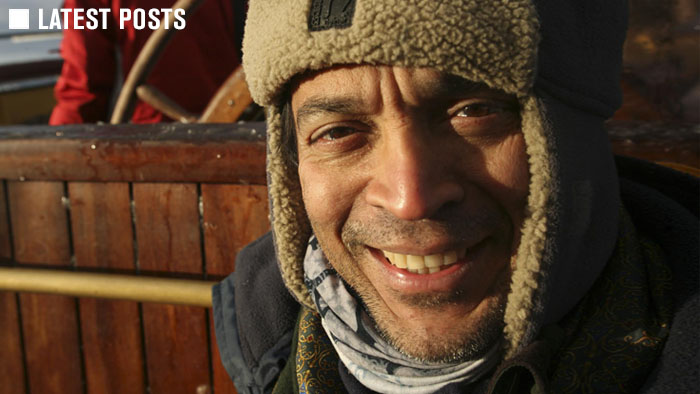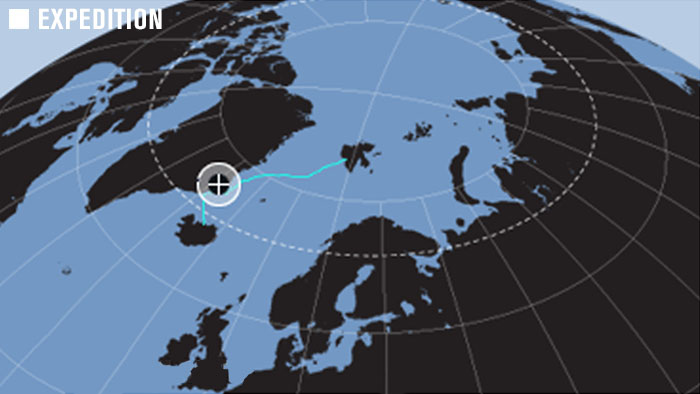Cape Farewell starts with a wave of science
By Simon // Tuesday 25 Sep // 16:19:03 // No Comments
The science team of Emily, Carol and Simon ingratiated themselves with the artists on board, in keeping with the Cape Farewell tradition, by heading out into the open ocean to sample the water. As well as the stuff washing over the crew we also wanted to probe below the wavey surface. Why? To investigate the present state of the West Spitsbergen Current, and if it might explain the anomalous ice patterns in the region.
This flow starts life off Florida as the Gulf Stream, becomes the Atlantic Drift as it passes by Britain and then the Norwegian Coastal Current heading north past Norway. In its final form, as the West Spitsbergen Current, it brings warm saline water from the central Atlantic to the high Arctic. This water is cooled by the Arctic climate and sinks just North of Spitsbergen (Svalbard) to contribute to the deep return flow of the Atlantic. The West Spitsbergen current is a sort of sub surface (about 20-80m in depth) “river” in the ocean that moves about 12 million cubic metres of water every second – in plain terms that is the same as 10,000 river Thames’ flowing north. The warm water also transports 70 trillion watts of heat into the high Arctic – that’s the power output of about 100,000 nuclear power stations.
[photopress:oceans.gif,full,pp_image]
Currents of the North East Atlantic Ocean (McCartney et al, 1996).
This year, news that the ice cover in the Arctic is the lowest on record is balanced with the fact that our route for the next few days, usually ice free in September, is blocked by pack ice. We couldn’t tell from the satellite pictures before we left if this was new ice forming or old sea ice dragged down by the stronger than usual northerly winds. If the former, then that might be a worrying indication of the weakening of the West Spitsbergen Current. We have now sampled through the current and compared it with data collected on the second Cape Farewell voyage in September 2003. The result? The flow where we are is as warm as it was 4 years ago – with temperatures reaching the same high of just under 7 degrees C compared to the cooler 3 degrees C of the Arctic water in the region. Good news for our current – still very bad news for the diminishing polar ice cover.
What next? We are now heading further west to study the return flows from the Arctic (East Greenland Current). This means sending our probes down to at least 200m – manually! We need Henry and Tom to help on the muscle power on this one, as we will have to drop and lift the equivalent of 4km of cable over the next 2 days. We will also be deploying the ARGO float later in the week – but more of that later. Meanwhile we need to keep the rest of the crew happy for another few days – they are our winches.
Simon – with help on numbers and pic from Emily.
Tags: Simon Boxall



